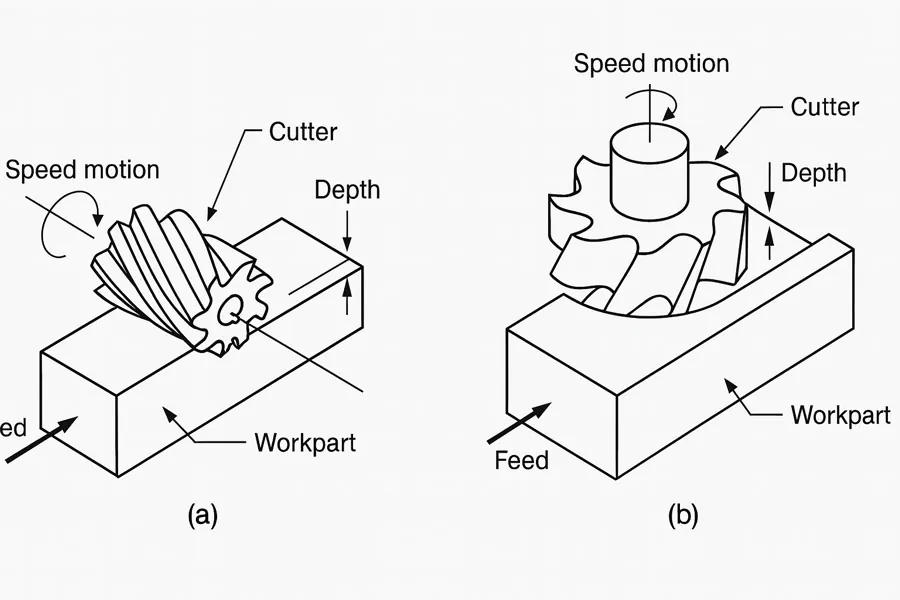Definition of Slab Milling
Slab milling, also known as plain or peripheral milling, is a machining process that creates a flat surface by rotating a milling cutter whose axis is parallel to the workpiece. It’s often the first step in machining a flat surface on a workpiece. The cutter’s edges around its circumference do the cutting. You use slab milling to rapidly reduce stock, prepare parts for finishing, or square up large plates. Engineers value its predictable cutting forces and uniform chip load. Buyers look for machines with robust slab milling features to boost throughput, lower cycle time, and ensure consistent surface quality.
Why It Matters for Band Saw and Mill Drill Machines
When you choose slab milling on a mill drill, you get faster stock removal and uniform planar surfaces. The wide cutter spreads cutting forces across many teeth, which reduces individual tooth load and tool wear. That means you can run higher feed rates without overloading the machine.
You also gain better dimensional accuracy and surface finish. Consistent chip evacuation keeps heat down and prevents work hardening. For you, that translates into fewer finishing passes and tighter tolerances on large workpieces. Robust slab milling capability can transform a standard mill drill into a versatile production tool.
Related Terms
Face MillingClimb Milling
Conventional Milling
Carbide Inserts
Roughing Pass
Toolpath
FAQ
Which machines support slab milling?
Slab milling works best on horizontal milling machines and mill drill machines with power feeds on the table or spindle. Look for machines offering rigid construction, precise power-feed control, and sufficient horsepower. Some vertical mills with robust table feed drives can also perform light slab milling. You need a machine that maintains stability under wide-cutter loads and offers adjustable feed rates to match cutter diameter and material hardness.
How do I select the right cutter for slab milling?
Choose a cutter with a diameter suited to the workpiece width and enough carbide or indexable inserts to share the load. Wider cutters (100–200 mm) remove more material per pass but require more machine power. Inspect tooth geometry: positive rake angles suit softer metals, while neutral or slight negative rake is safer for harder alloys. Verify insert grade for material compatibility and ensure you have enough reserve stock for multiple re-grinds.
What cutting parameters work best for slab milling?
Start with a moderate spindle speed and a feed per tooth of 0.1–0.2 mm, then adjust based on cutter diameter and material. Deeper cuts up to half the cutter diameter boost material removal but increase force. Balance depth and width of cut to match your machine’s rigidity. Monitor chip shape and surface finish: long, stringy chips suggest too light a cut, while powdery chips indicate excessive engagement or dull inserts.



